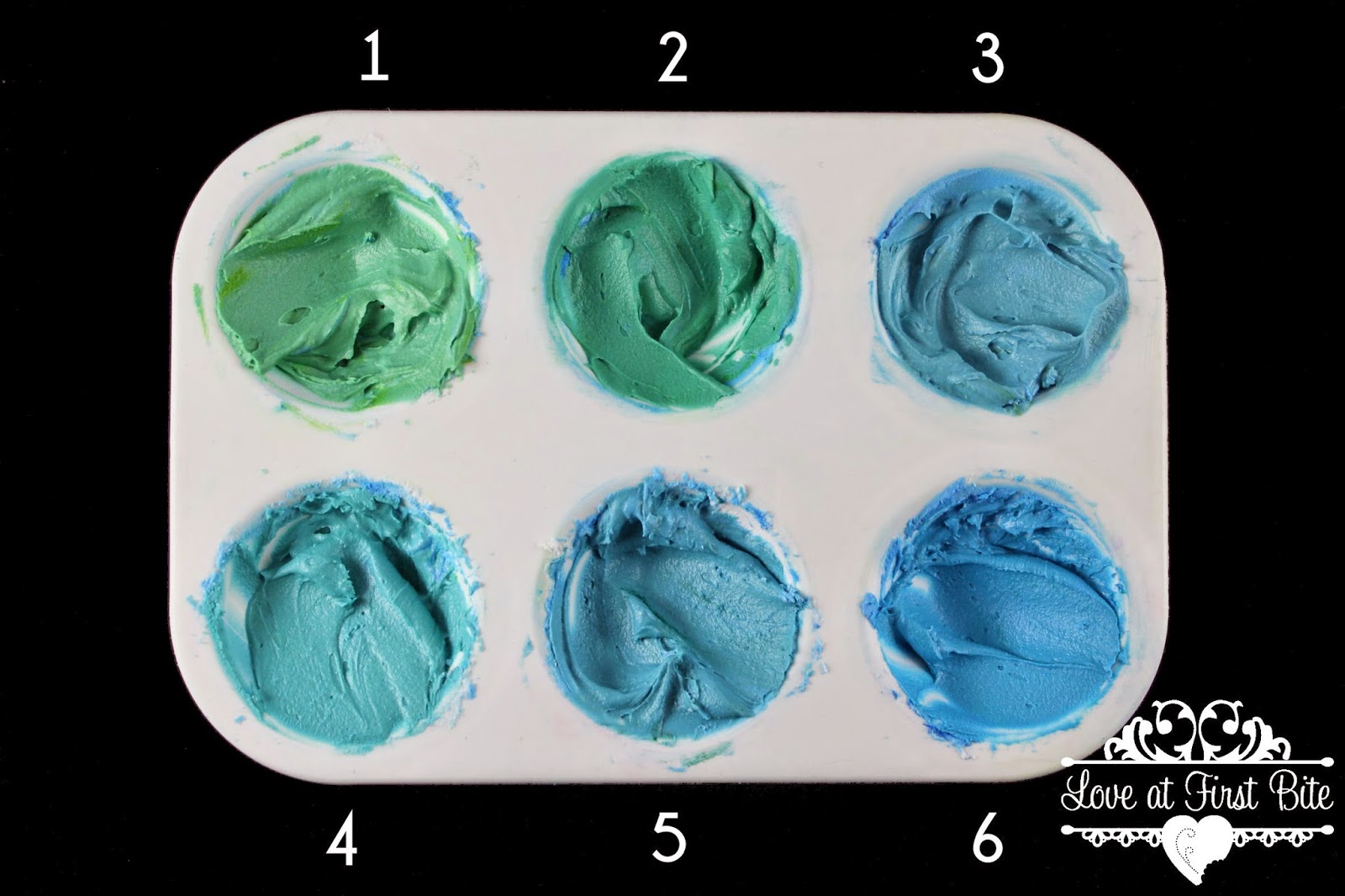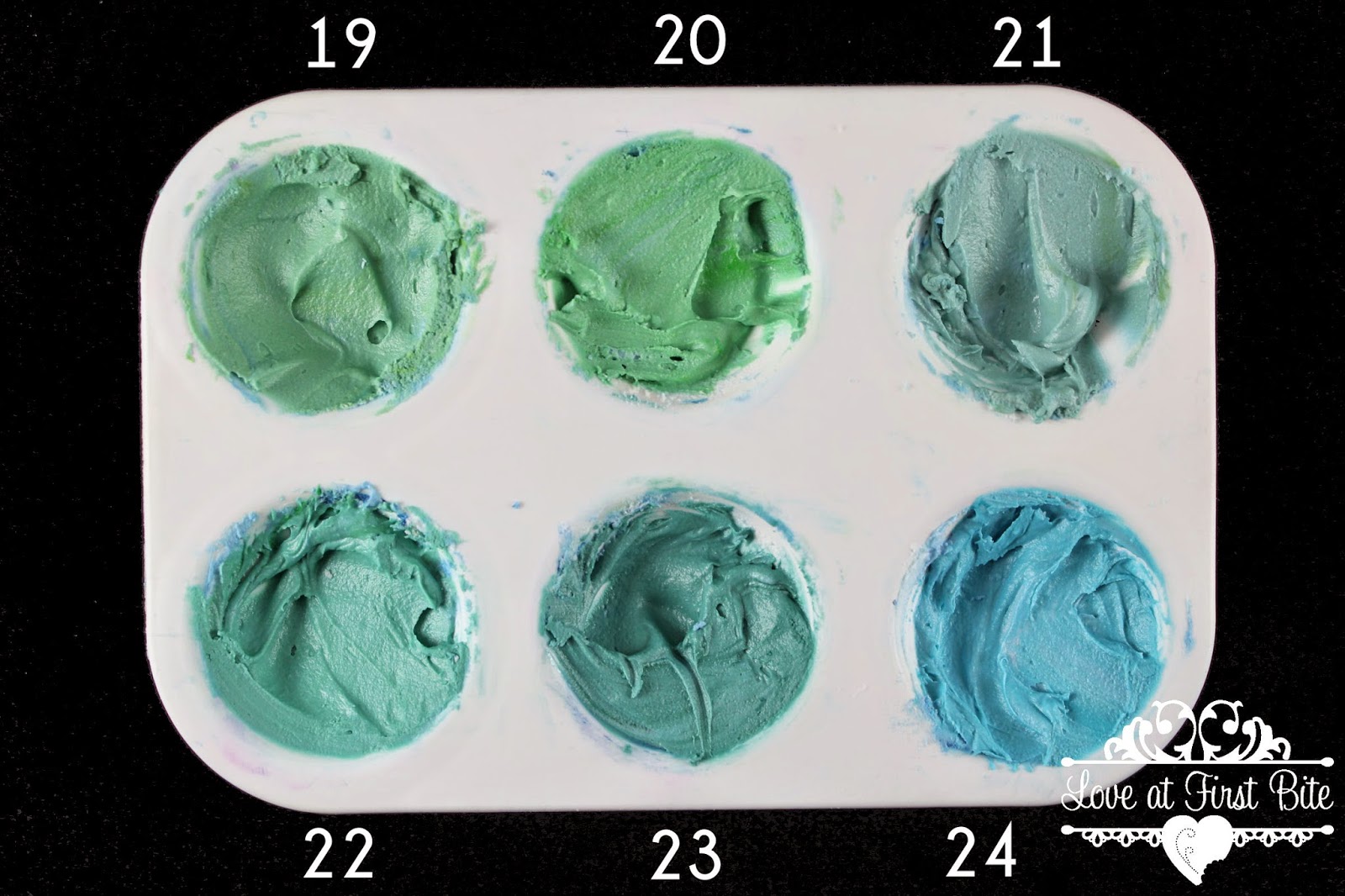Phew...I survived the holidays!!! I can finally get back to doing what I love...mixing up colors.
Last time, we learned about color bias and how to choose the proper "primary" colors to mix all other colors. Color bias is mainly used for "primary" colors, since pure primary colors don't exist. However, putting secondary colors (orange, green and violet) into color bias groups can make it easier for you to see the difference between each secondary color. Can you see the dominant "primary" color in each set of secondary colors on the chart?
Secondary colors can lean toward a color bias...this is what is known as a tertiary color. We already know that we need to mix a "primary" color and a secondary color to get a tertiary color. But wait...which two colors do we need to mix together? It really doesn't matter!!! What I love about creating tertiary colors is that there is no wrong way to mix them...which means no muddy colors.
Don't forget...you still need to remember your complementary colors, for you don't want to mix those two together unless you plan on making a neutral color (refer to complementary chart).
You need to choose a "primary" red that has an orange bias (refer to "Primary" Color Bias Chart). When it comes to choosing the right orange, you need not to worry. Orange already contains red, so any orange will do. I will let you in on a little secret...it will make life so much easier if you choose the orange that leans towards the red bias. You won't have to add as much "primary" red to your icing. We all know red has an aftertaste and can be harmful to our bodies...so it just makes sense to use less of it when possible. Secondary colors can lean toward a color bias...this is what is known as a tertiary color. We already know that we need to mix a "primary" color and a secondary color to get a tertiary color. But wait...which two colors do we need to mix together? It really doesn't matter!!! What I love about creating tertiary colors is that there is no wrong way to mix them...which means no muddy colors.
Don't forget...you still need to remember your complementary colors, for you don't want to mix those two together unless you plan on making a neutral color (refer to complementary chart).
Red-Orange (Red + Orange)
Let's say you needed to make a specific tertiary color such as Vermillion.Take a look at the icing samples below, which two look the closest to Vermillion?
 |
| "Primary" Super Red mixed with oranges (1) Terracotta (2) Electric Orange (3) Orange (4) Copper (5) Peach |
 |
| "Primary" Red Red mixed with oranges (6) Terracotta (7) Electric Orange (8) Orange (9) Copper (10) Peach |
 |
| "Primary" Tulip Red mixed with oranges (11) Terracotta (12) Electric Orange (13) Orange (14) Copper (15) Peach |
 |
| "Primary" Xmas Red mixed with oranges (16) Terracotta (17) Electric Orange (18) Orange (19) Copper (20) Peach |
 |
| "Primary" Holiday Red mixed with oranges (21) Terracotta (22) Electric Orange (23) Orange (24) Copper (25) Peach |
That is right...#1 and 6 match the Vermillion swatch! These icing colors are the most accurate because I used an orange biased "primary" red and Terracotta for my secondary color, which is a red biased orange (See Secondary Color Bias Chart above). If you don't own a food color such as Terracotta you can use any orange and just add more red to your icing.
Quiz time!!! Now that you know what two colors will get you the most accurate tertiary color, let's see if you can find all of them for each color below. The two best answers are listed after each set of icing colors. Remember what you learned and have fun!!!
Answer: #2 and #8 match the Gold swatch above.
Answer: #1 and #7 match the Chartreuse swatch above.
Answer: #8 and #10 match the Turquoise swatch above.
Answer: #1 and #2 match the Indigo swatch above.
Answer: #4 and #11 match the Mulberry swatch above.
Yellow-Orange (Yellow + Orange)
Which two numbers match this Gold?
 |
| "Primary" Lemon Yellow mixed with oranges (1) Terracotta (2) Electric Orange (3) Orange (4) Copper (5) Peach |
 |
| "Primary" Electric Yellow mixed with oranges (6) Terracotta (7) Electric Orange (8) Orange (9) Copper (10) Peach |
 |
| "Primary" Egg Yellow mixed with oranges (11) Terracotta (12) Electric Orange (13) Orange (14) Copper (15) Peach |
 |
| "Primary" Gold mixed with oranges (16) Terracotta (17) Electric Orange (18) Orange (19) Copper (20) Peach |
Yellow-Green (Yellow + Green)
Which two numbers match this Chartreuse?
 |
| "Primary" Lemon Yellow mixed with greens (1) Electric Green (2) Mint Green (3) Avocado (4) Leaf Green (5) Forest Green (6) Teal |
 |
| "Primary" Electric Yellow mixed with greens (7) Electric Green (8) Mint Green (9) Avocado (10) Leaf Green (11) Forest Green (12) Teal |
 |
| "Primary" Egg Yellow mixed with greens (13) Electric Green (14) Mint Green (15) Avocado (16) Leaf Green (17) Forest Green (18) Teal |
 |
| "Primary" Gold mixed with greens (19) Electric Green (20) Mint Green (21) Avocado (22) Leaf Green (23) Forest Green (24) Teal |
 |
| Turquoise mixed with 'primary" yellows (25) Lemon Yellow (26) Electric Yellow (27) Egg Yellow (28) Gold |
Blue-Green (Blue + Green)
Which two numbers match this Turquoise?
 |
| "Primary" Royal Blue mixed with greens (1) Electric Green (2) Mint Green (3) Avocado (4) Leaf Green (5) Forest Green (6) Teal |
 |
| "Primary" Electric Blue mixed with greens (7) Electric Green (8) Mint Green (9) Avocado (10) Leaf Green (11) Forest Green (12) Teal |
 |
| "Primary" Sky Blue mixed with greens (13) Electric Green (14) Mint Green (15) Avocado (16) Leaf Green (17) Forest Green (18) Teal |
 |
| "Primary" Navy Blue mixed with greens (19) Electric Green (20) Mint Green (21) Avocado (22) Leaf Green (23) Forest Green (24) Teal |
 |
| Turquoise mixed with "primary" blues (25) Royal Blue (26) Electric Blue (27) Sky Blue (28) Navy Blue |
Blue-Violet (Blue + Violet)
Which two numbers match this Indigo?
 |
| "Primary" Royal Blue mixed with violets (1) Violet (2) Regal Purple (3) Electric Purple |
 |
| "Primary" Electric Blue mixed with violets (4) Violet (5) Regal Purple (6) Electric Purple |
 |
| "Primary" Sky Blue mixed with violets (7) Violet (8) Regal Purple (9) Electric Purple |
 |
| "Primary" Navy Blue mixed with violets (10) Violet (11) Regal Purple (12) Electric Purple |
Red-Violet (Red + Violet)
Which two numbers match this Mulberry
 |
| Violet mixed with "primary" reds (1) Super Red (2) Red Red (3) Tulip Red (4) Xmas Red (5) Holiday Red (6) Burgundy |
 |
| Regal Purple mixed with "primary" reds (7) Super Red (8) Red Red (9) Tulip Red (10) Xmas Red (11) Holiday Red (12) Burgundy |
 |
| Electric Purple mixed with "primary" reds (13) Super Red (14) Red Red (15) Tulip Red (16) Xmas Red (17) Holiday Red (18) Burgundy |
I hope you got all of them right!!! Next time I will show you all the colors you can make using your pinks and neutral colors.
Have a wonderful and colorful week:-)










